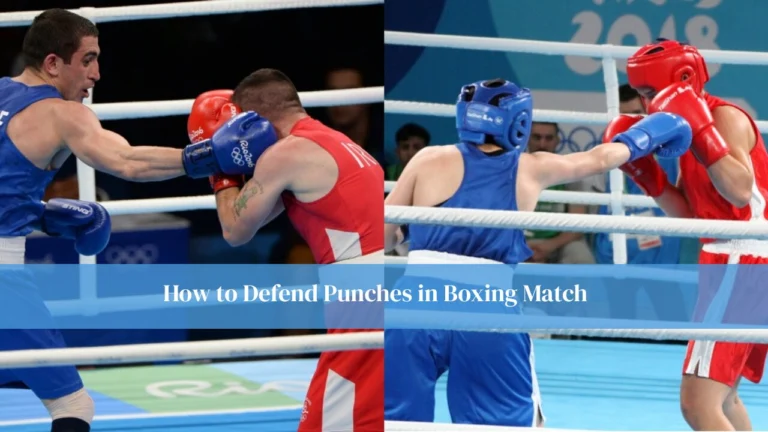The Superman punch, a striking technique that has captivated the attention of combat sports enthusiasts around the globe, stands out for its flamboyance, precision, and effectiveness. While it is widely recognized in mixed martial arts (MMA) and other disciplines, its presence in boxing remains a subject of debate and curiosity. Many boxing fans and fighters alike wonder if this crowd-pleaser is permissible under traditional boxing rules. In this article, we will explore the question: Is a Superman Punch Legal in Boxing? We will delve into the regulations governing punches, examine why this technique is rarely employed in the ring, provide a detailed breakdown of its mechanics, analyze its impact on fights, and discuss strategies for mastering it.
What is a Superman Punch?
Originating from the dynamic and fluid world of Muay Thai, the Superman punch has transcended its initial martial arts environment to become a recognizable technique across combat sports. Its hallmark is a feint followed by a powerful, airborne strike that surprises opponents, combining misdirection with explosive power. The technique is visually impressive, often making it a favorite among audiences and commentators alike. Unlike traditional punches, which rely on steady footwork and linear movement, the Superman punch incorporates elements of acrobatics and timing, creating an unpredictable attack.
The effectiveness of the Superman punch lies not only in its power but also in the element of surprise it introduces. In Muay Thai and MMA, the punch is often integrated into a sequence of kicks, jabs, and clinches, making it a versatile tool. Fighters who master this technique can manipulate an opponent’s expectations, setting up openings that other strikes cannot achieve. However, when transitioning to boxing, where rules are more restrictive and strategies more linear, the application of the Superman punch presents unique challenges.
Is a Superman Punch Legal in Boxing
The legality of any punch in boxing is determined by strict regulatory standards designed to ensure fighter safety while maintaining the sport’s integrity. While the Superman punch is visually spectacular, it is essential to examine whether its execution complies with these rules. In boxing, punches must be delivered with the front of the fist, targeting the front or sides of the opponent’s head and torso, while avoiding the back of the head, the neck, and below the belt. By these criteria, the Superman punch, when executed correctly, is indeed legal in boxing. The punch uses the fist in a conventional striking manner and does not inherently violate any standard regulations.
Despite its legality, the Superman punch remains an anomaly in professional boxing. This rarity is not due to prohibition but rather to strategic and tactical considerations. Boxing emphasizes defensive positioning, rhythm, and measured combinations. The Superman punch, requiring a forward leap and momentary abandonment of a protective guard, introduces risk that many boxers are unwilling to accept. The potential payoff is high if the punch lands cleanly, but the consequences of a missed or poorly timed attempt can be severe, leaving the fighter exposed to counterattacks. Consequently, even though the punch is legal, it is deployed sparingly within the squared circle.
Rules Governing Punches in Boxing
To appreciate why the Superman punch is seldom used in boxing, it is important to understand the sport’s strict regulatory framework. Boxing defines a legal punch as one delivered with the knuckle part of a closed fist, striking the opponent above the waist. Targeting the back of the head, the spine, or below the belt constitutes a foul, leading to warnings or point deductions. The rules are designed not only to standardize competition but also to minimize the risk of serious injury. While MMA allows a broader range of techniques, including kicks, elbows, and flying strikes, boxing restricts attacks to punches, making precision and guard maintenance paramount.
Given these rules, a properly executed Superman punch falls within the legal spectrum. The punch is thrown with the fist, maintains an upward trajectory aimed at the permissible striking zones, and does not involve illegal targets. However, the technique introduces a momentary vulnerability: the fighter’s guard is disrupted during the leap, which can result in counterattacks or loss of balance. This inherent risk is a major reason why even experienced boxers employ it cautiously, if at all.
Why the Superman Punch Is Rarely Seen in Boxing
The rarity of the Superman punch in boxing is directly tied to the sport’s emphasis on defense, timing, and incremental advantages. Unlike MMA, where fighters can exploit kicks and clinches to create openings, boxing relies heavily on hand speed, footwork, and combinations that maintain continuous defense. The Superman punch demands precise timing and considerable athleticism to avoid leaving oneself exposed. A failed attempt in boxing is often more punishing than in MMA, where grappling or defensive maneuvers can compensate for missed strikes.
Additionally, boxing opponents are trained to read punches and anticipate linear strikes, which diminishes the surprise element crucial to the Superman punch’s effectiveness. When a boxer leaps forward with a high-risk maneuver, an experienced opponent can exploit this momentary gap in defense. Therefore, while the punch is legal, its strategic utility is limited. Boxers may occasionally experiment with it during sparring or exhibitions, but competitive fights rarely see its full application.
Technical Breakdown of the Superman Punch
The Superman punch is more than a simple punch; it is a choreographed sequence of movements that integrates misdirection, momentum, and precision. Each component of the technique contributes to the power and unpredictability of the strike, making it an advanced maneuver that requires careful training and practice.
Mechanics of the Punch
The Superman punch begins with a feint, usually involving the rear leg. This feint resembles the initial motion of a kick, intended to deceive the opponent and create forward momentum. The feint serves as both a distraction and a catalyst for the subsequent leap. As the feint is executed, the fighter propels the body forward by pushing off the lead foot, effectively converting horizontal movement into kinetic force. This propulsion is essential for adding weight and speed to the strike.
The actual punch is delivered with the rear hand, extending forcefully toward the target. The rear leg, which initiated the feint, is retracted in tandem with the punch, creating an aerial illusion reminiscent of Superman’s flight. This coordinated movement enhances the punch’s power while maintaining balance. Upon completion, the fighter lands back into a stable stance, prepared to defend or continue offensive actions. Mastery of this landing is critical, as improper recovery can leave the fighter vulnerable to counters.
Power Generation and Timing
The success of the Superman punch depends on the interplay of biomechanics and timing. The leap generates forward momentum, while the synchronized movement of the rear hand and leg amplifies the force of impact. Timing is equally crucial; striking too early or late can nullify the punch’s effectiveness and increase the risk of exposure. Fighters must cultivate explosive strength, precision, and spatial awareness to execute this punch reliably.
Application and Considerations
The Superman punch is highly situational. Its effectiveness is maximized when an opponent is off-balance, distracted, or anticipating a conventional attack. Overuse can lead to predictability, reducing the punch’s element of surprise. Consequently, fighters integrate it sparingly into their arsenal, often reserving it for decisive moments or as a counter to anticipated movements.
The Impact of the Superman Punch in Fights
Beyond physical execution, the Superman punch carries a psychological weight that influences opponents and the overall dynamics of a match. A well-timed Superman punch can alter the pace of a fight, induce hesitation, and create strategic openings.
Notable Instances
In MMA, Georges St-Pierre famously employed the Superman punch to disrupt opponents’ rhythm, demonstrating the punch’s capacity to control engagements. His adept use of this technique highlighted its potential to open defensive gaps and dictate the tempo of a fight. In boxing, though less frequent, instances of the Superman punch appearing in high-level bouts often captivate audiences and momentarily destabilize opponents, adding an unpredictable element to the match.
Psychological Effects on Opponents
The visual spectacle of the Superman punch can demoralize an opponent, causing doubt in their defensive strategy and forcing adjustments. Landing such a strike can create a perception of invincibility, psychologically pressuring the opponent and influencing their subsequent decisions. Furthermore, crowd reaction amplifies this effect, as enthusiastic spectators can indirectly affect the mental state of both fighters, creating a subtle yet significant advantage for the user of the punch.
Training for the Superman Punch
Incorporating the Superman punch into a fighter’s repertoire requires deliberate training focused on power, precision, balance, and seamless integration with existing techniques. The exercise of mastering this move is as important as understanding its mechanics.
Developing Power and Precision
The punch demands explosive strength and pinpoint accuracy. Core training, including exercises like planks, Russian twists, and medicine ball throws, is essential for transferring energy efficiently from the lower body to the upper body. Plyometric exercises, such as jump squats and box jumps, enhance the fighter’s explosive capacity, critical for the forward leap. Precision drills on heavy bags or with pad holders develop the consistency required to target an opponent effectively.
Maintaining balance and coordination through specialized drills ensures stability during airborne execution, reducing vulnerability. Shadow boxing allows fighters to focus on technique, refining form in a controlled setting before applying it in live scenarios.
Integrating into Boxing Techniques
For boxers, adapting the Superman punch requires strategic incorporation into their conventional arsenal. Feints and combination work are pivotal in making the punch less predictable. Practicing the punch following jabs or hooks can exploit openings created by standard attacks. Footwork drills simulate the motion and allow for smooth transitions between offense and defense. Conditioning for speed ensures the punch can be executed with the surprise element intact, preserving its effectiveness while minimizing risk.
Conclusion
In conclusion, the Superman punch is a legitimate, legal technique within the realm of boxing, but its strategic application is limited by the sport’s emphasis on defense, precision, and consistent guard maintenance. While it remains a spectacular move that can influence fights both physically and psychologically, its rarity in professional boxing is understandable. Mastery requires careful attention to biomechanics, timing, power, and strategic integration. Despite these challenges, the Superman punch continues to captivate audiences and challenge fighters, highlighting the dynamic intersection of skill, spectacle, and strategy that defines combat sports. Its presence, though rare in boxing, underscores the evolving creativity and adaptability inherent in the world of striking martial arts. Whether employed in MMA, Muay Thai, or as a daring element in boxing, the Superman punch remains a testament to the artistry and athleticism of modern fighters.
FAQs
Is the Superman punch effective in amateur boxing?
Yes, but it’s rare due to the emphasis on traditional techniques in amateur boxing. Effectiveness depends on timing and execution.
How can I defend against a Superman punch?
Maintain a solid guard, watch for pre-movement cues, create distance, or prepare a counterattack as a defense strategies.
Are there any famous boxers who have used the Superman punch in their fights?
The Superman punch is more common in MMA. In boxing, it’s unusual, with few boxers, like Roy Jones Jr., occasionally showcasing unorthodox moves akin to it.
Related Post




